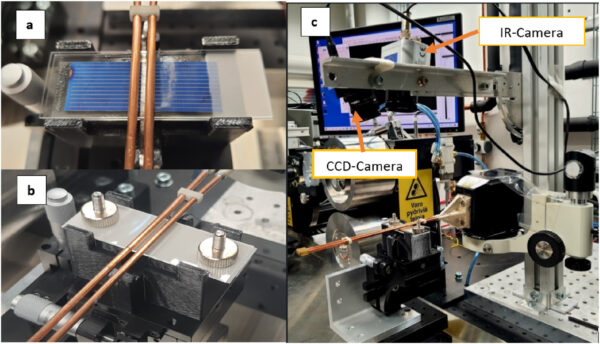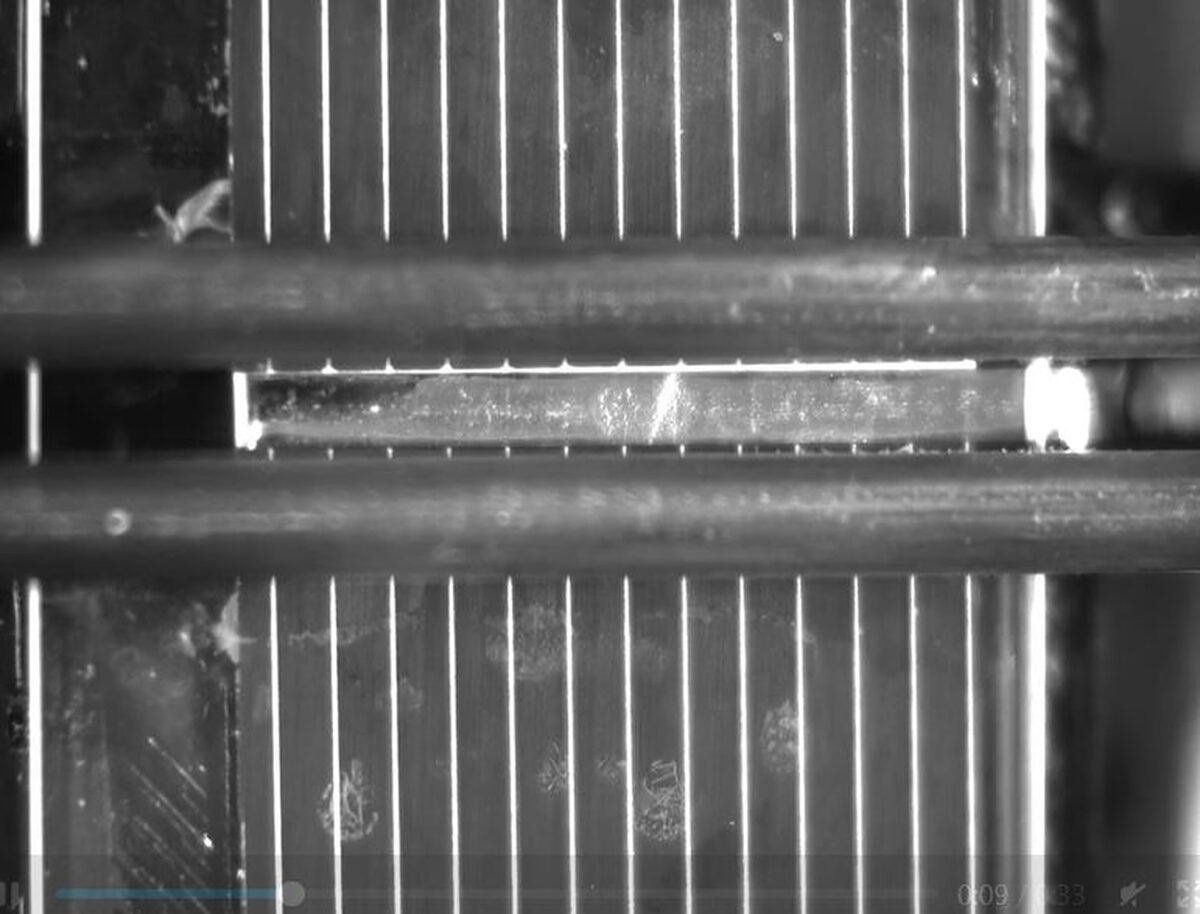Researchers at the University of Oulu in Finland have developed a non-contact soldering technique for tabbing the ribbon of PV cells that may reportedly reduce thermal and mechanical stress in solar cell production, thus avoiding the risk of cracks, disconnected wiring, and hotspots.
The scientists said that mitigating thermo-mechanical stress in solder joints is challenging, as it occurs between two types of material at high process temperatures. “The risk of fatigue-caused damages during operation will increase, leading to elevated series resistance losses, which can create a major challenge in optimizing the interconnection soldering process,” they explained.
The newly developed technique consists of an eddy current soldering method that must be applied through a layer of glass. Eddy current, which is produced by anything that causes a change in the intensity or direction of a magnetic field in a conductor, is a non-destructive method that can be performed on conductive materials.
The Finnish group tested this process on a polycrystalline silicon solar cell measuring 52 mm x 19 mm x 0.21 mm and featuring one silver busbar with a width of 1.8 mm on the front and a 1.8 mm continuous soldering pad on the rear. Soldering operations were conducted using a microscopic cover glass slide with a size of 76 mm x 26 mm x 1 mm and with solder-coated copper ribbons made of basic lead solar alloy Sn63Pb37 at a melting temperature ranging from 183 C to 190 C.
“Small weights (34.4 g each) were placed at the end of the glass plate to ensure proper contact between the ribbon and the silver busbar,” the academics said, noting that the heating source used was a Power Cube 32/900 high-frequency generator provided by US-based CEIA, with the heating coil maintaining a distance of around 2.5 mm.
Popular content
The scientists claim that this setting and the induced eddy currents generate localized heat without any direct contact heating coil.
Through a series of testing and microstructural analyses, they have been able to ascertain that no additional cracks or damages were detected in the soldered cells, with the exception of a few samples. They also verified that a longer exposure time is preferable to avoid microcracks within the solder joint configuration.

Image: University of Oulu, Solar Energy Materials and Solar Cells, Creative Commons License CC BY 4.0
They concluded that the new method is technically and commercially feasible, as well as competitive with traditional contact soldering techniques. “In addition to ribbon soldering, the proposed technique is developed for use in the future study of repairing and refurbishing the used solar panel after failure or increased series resistance because of degradation due to passing the time in tabbing wires or busbars connections without disassembling the solar module panel,” they also stated.
The soldering process is described in the study “Eddy current soldering of solar cell ribbons under a layer of glass,” published in Solar Energy Materials and Solar Cells.
This content is protected by copyright and may not be reused. If you want to cooperate with us and would like to reuse some of our content, please contact: editors@pv-magazine.com.



By submitting this form you agree to pv magazine using your data for the purposes of publishing your comment.
Your personal data will only be disclosed or otherwise transmitted to third parties for the purposes of spam filtering or if this is necessary for technical maintenance of the website. Any other transfer to third parties will not take place unless this is justified on the basis of applicable data protection regulations or if pv magazine is legally obliged to do so.
You may revoke this consent at any time with effect for the future, in which case your personal data will be deleted immediately. Otherwise, your data will be deleted if pv magazine has processed your request or the purpose of data storage is fulfilled.
Further information on data privacy can be found in our Data Protection Policy.